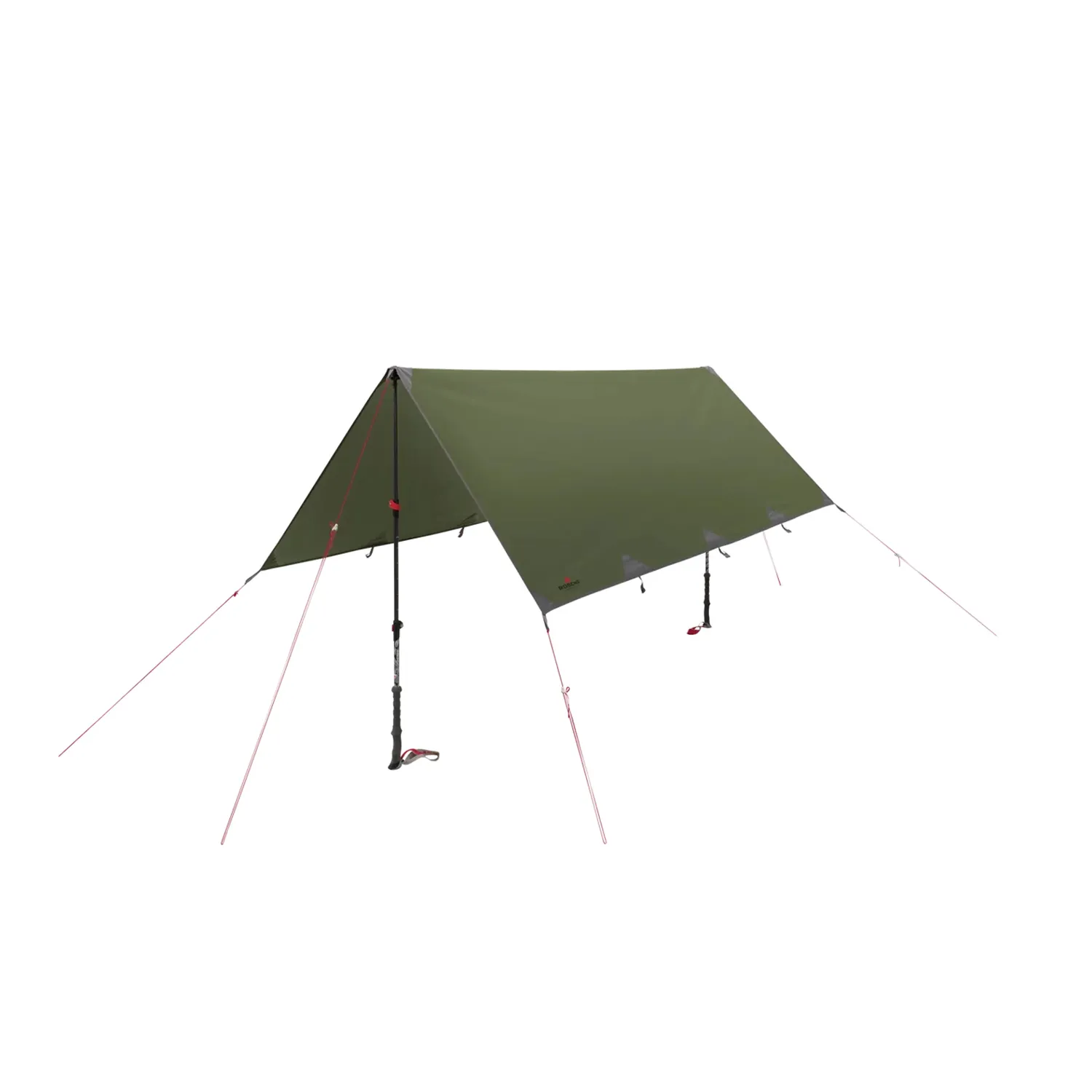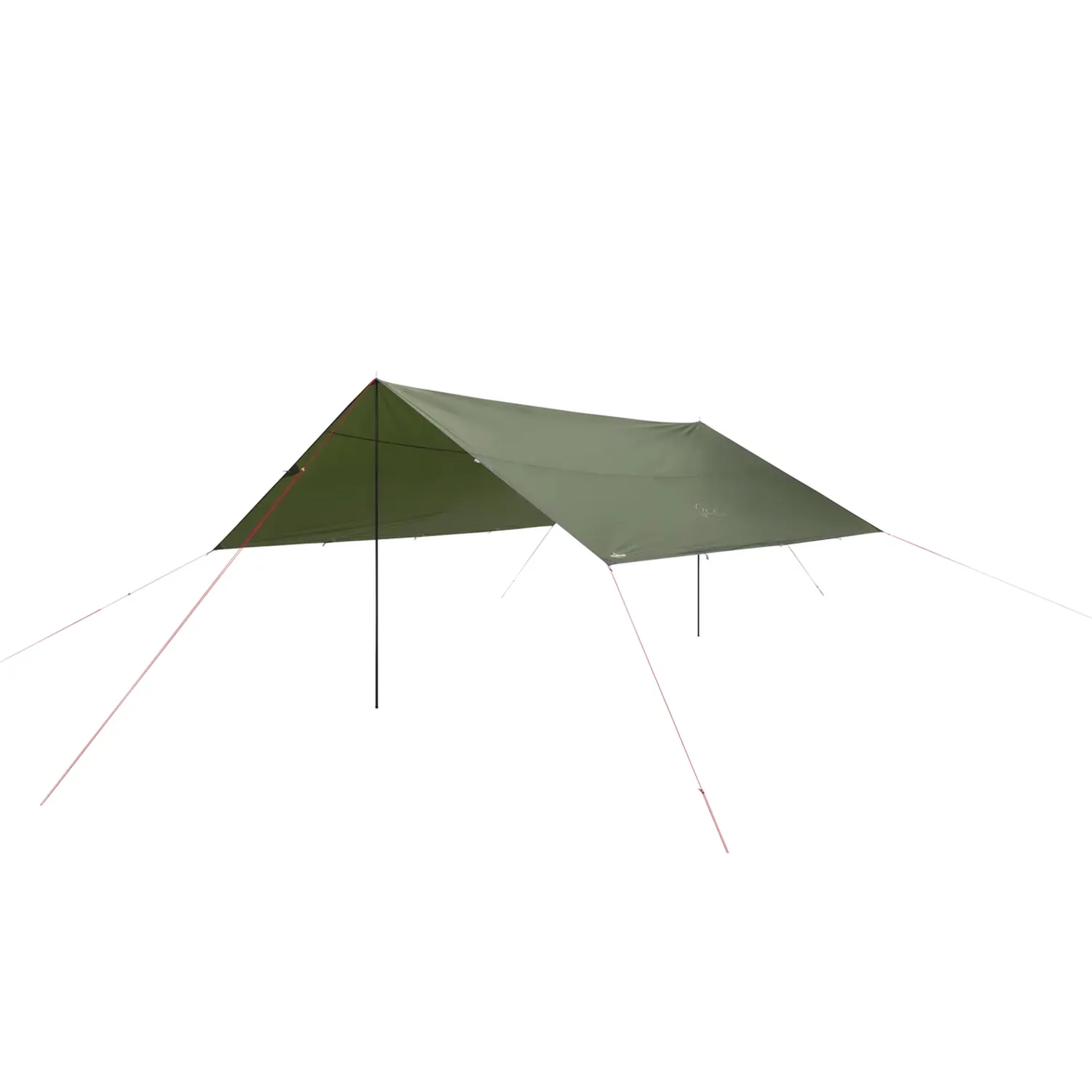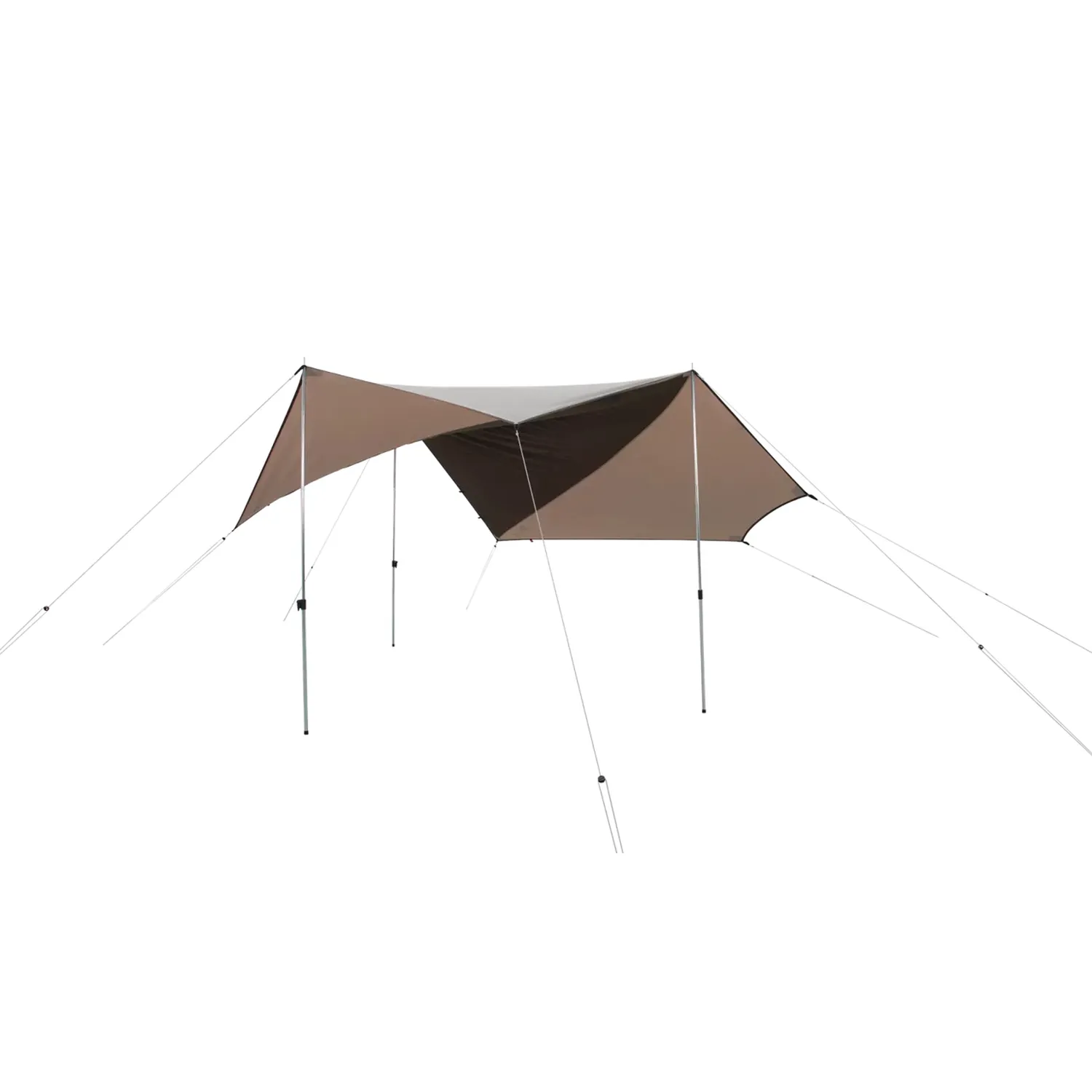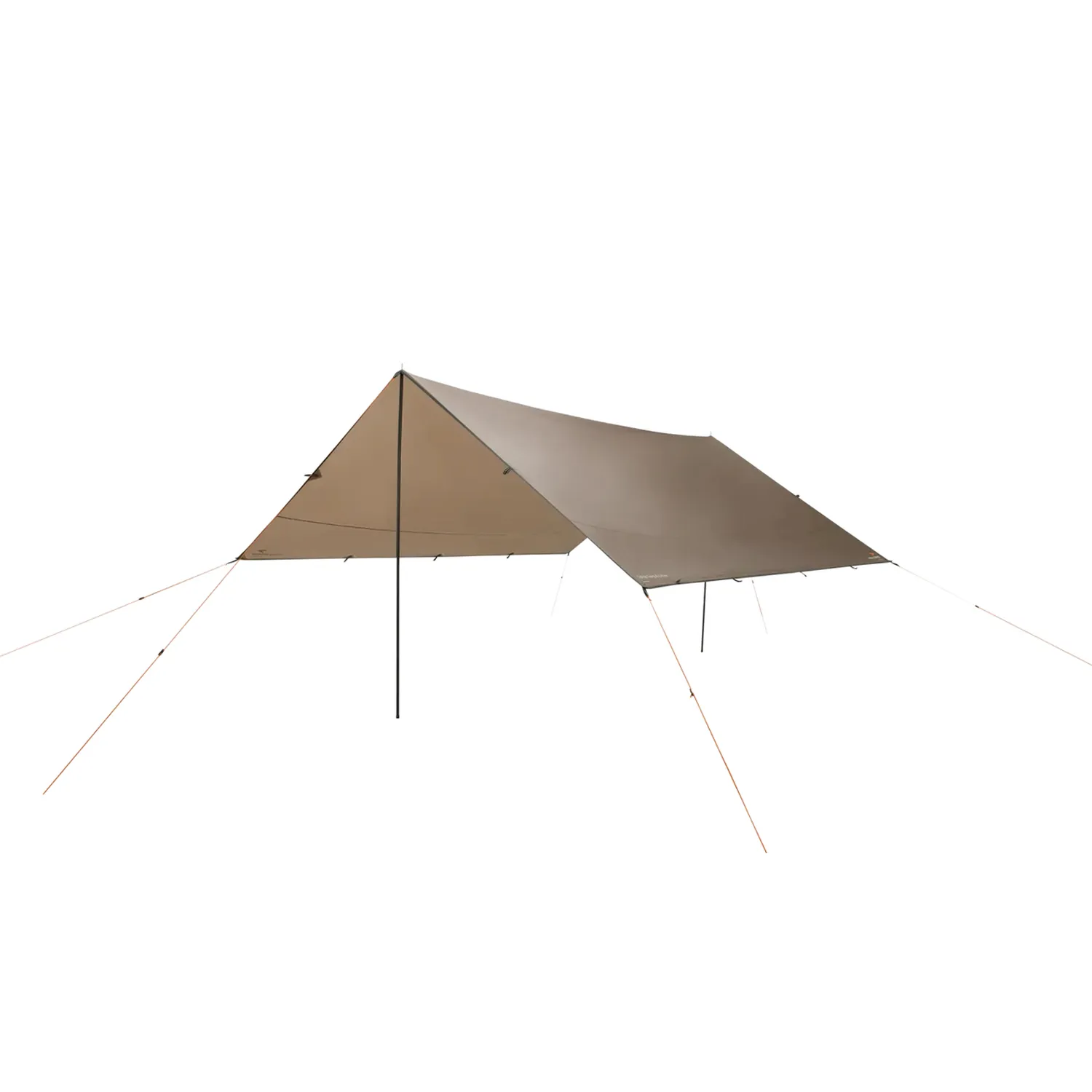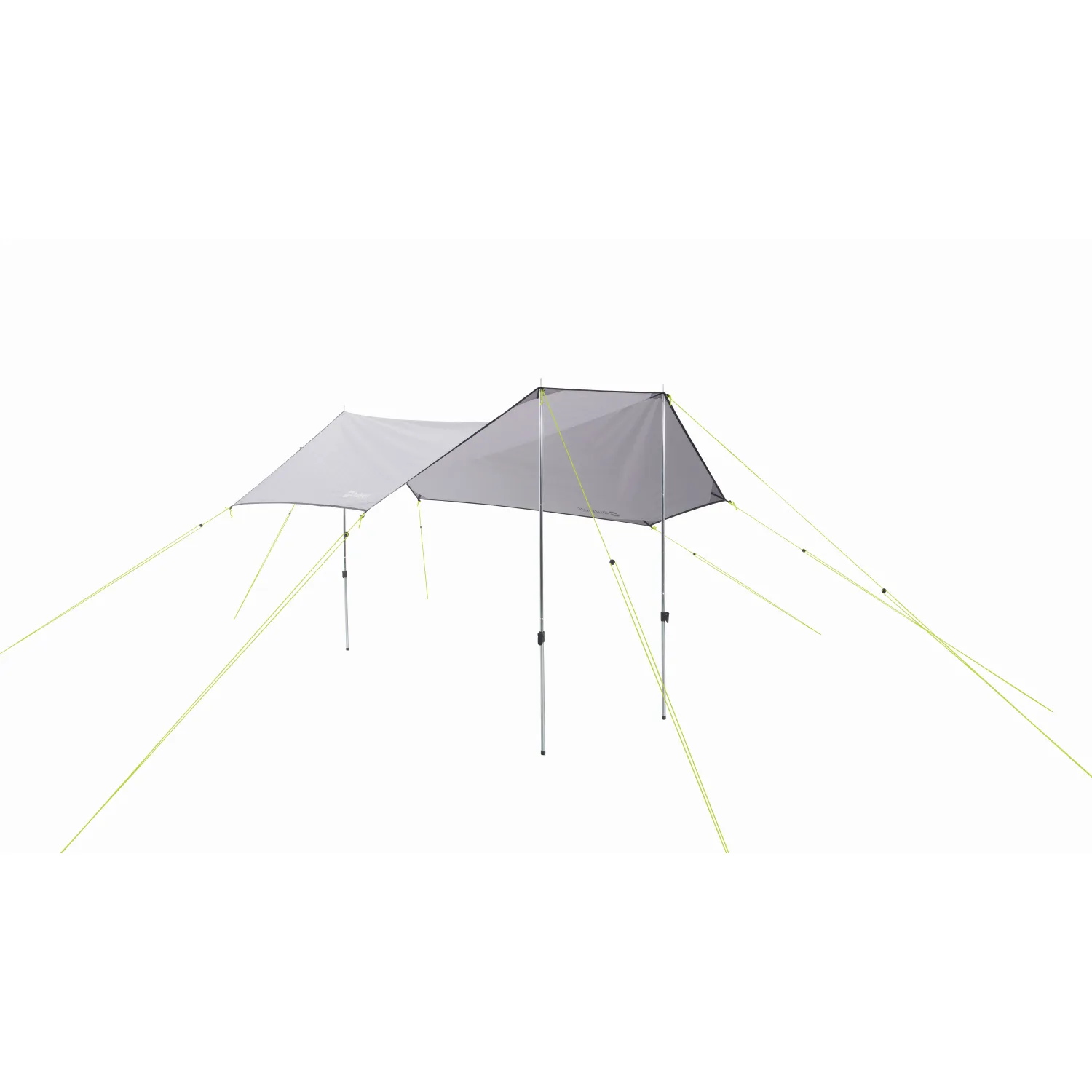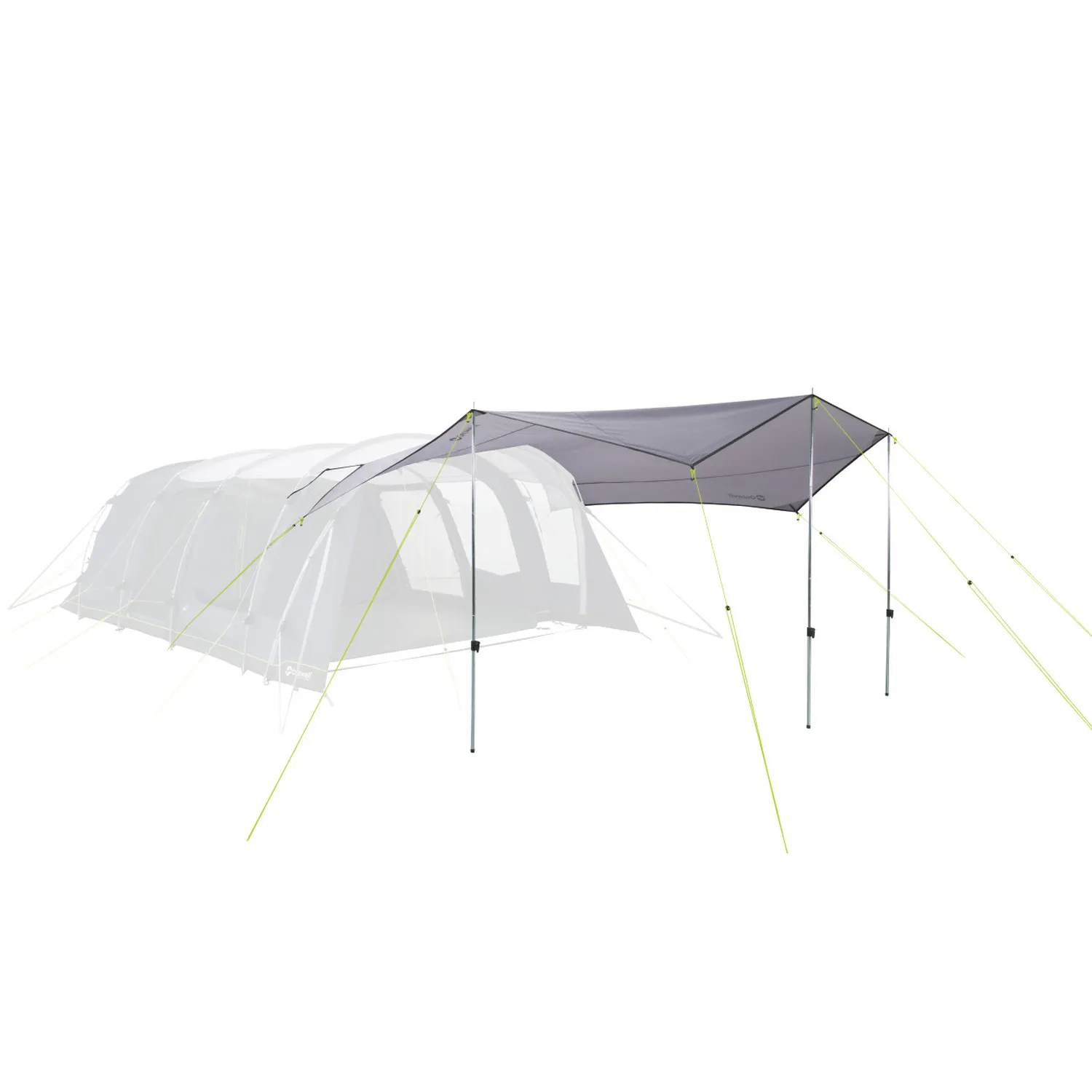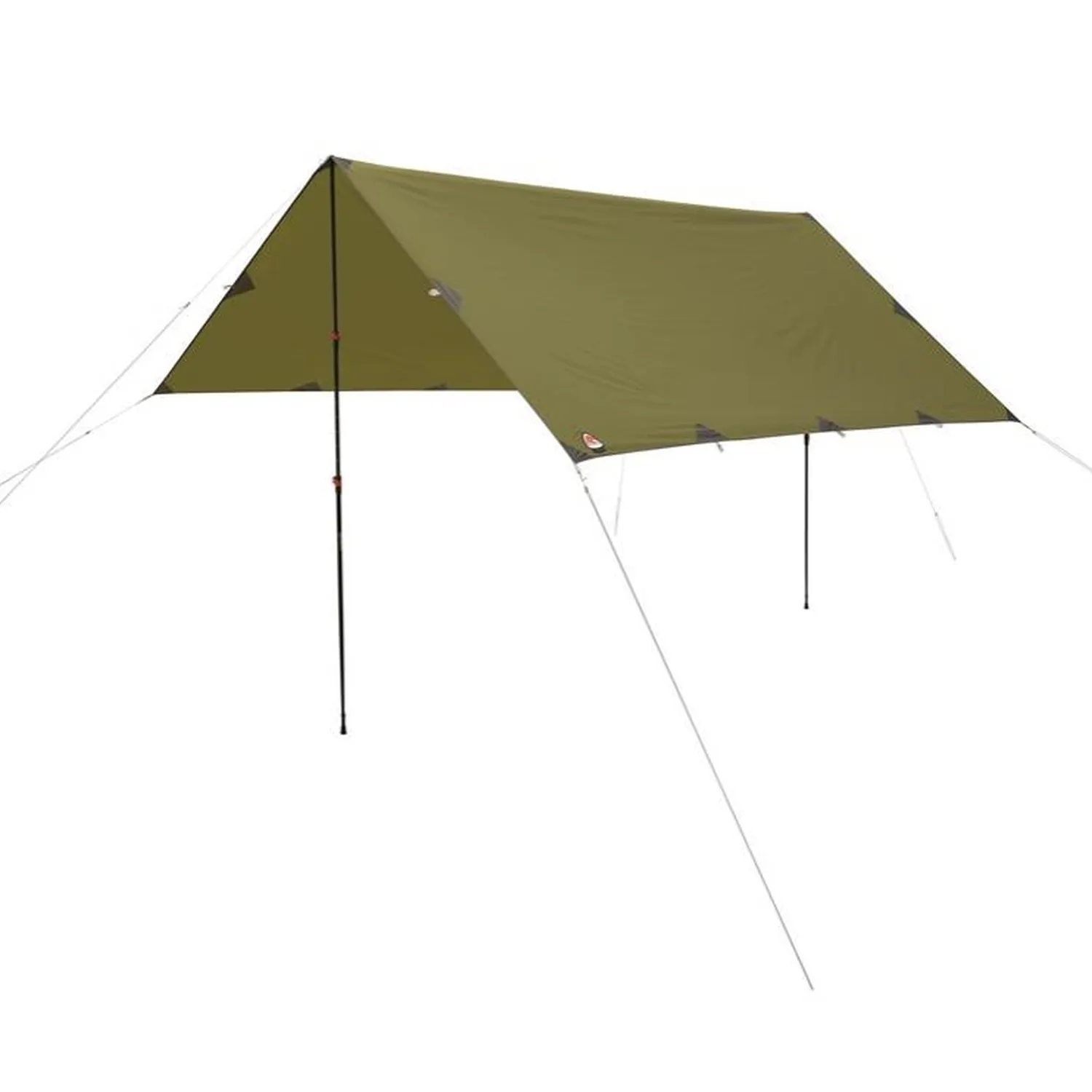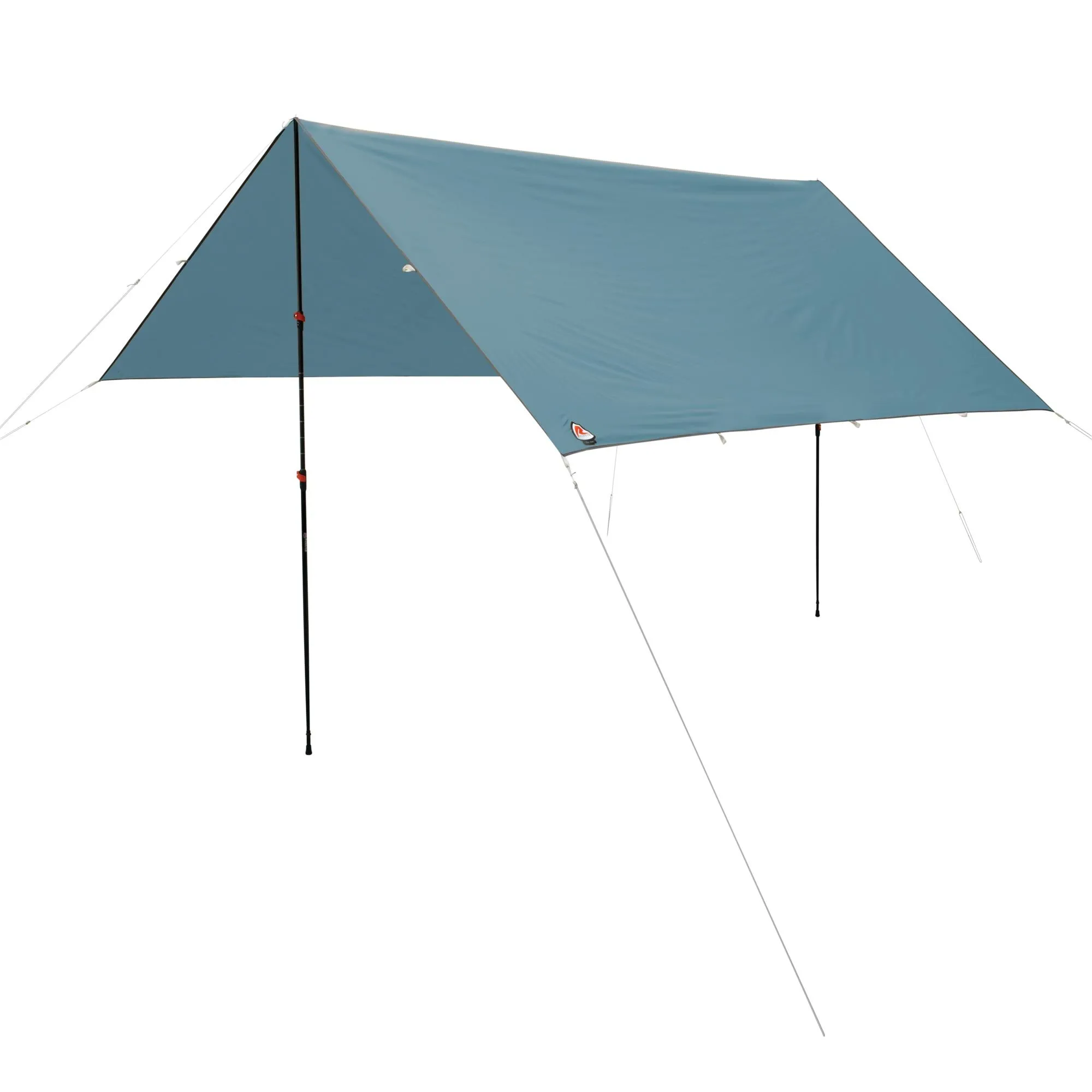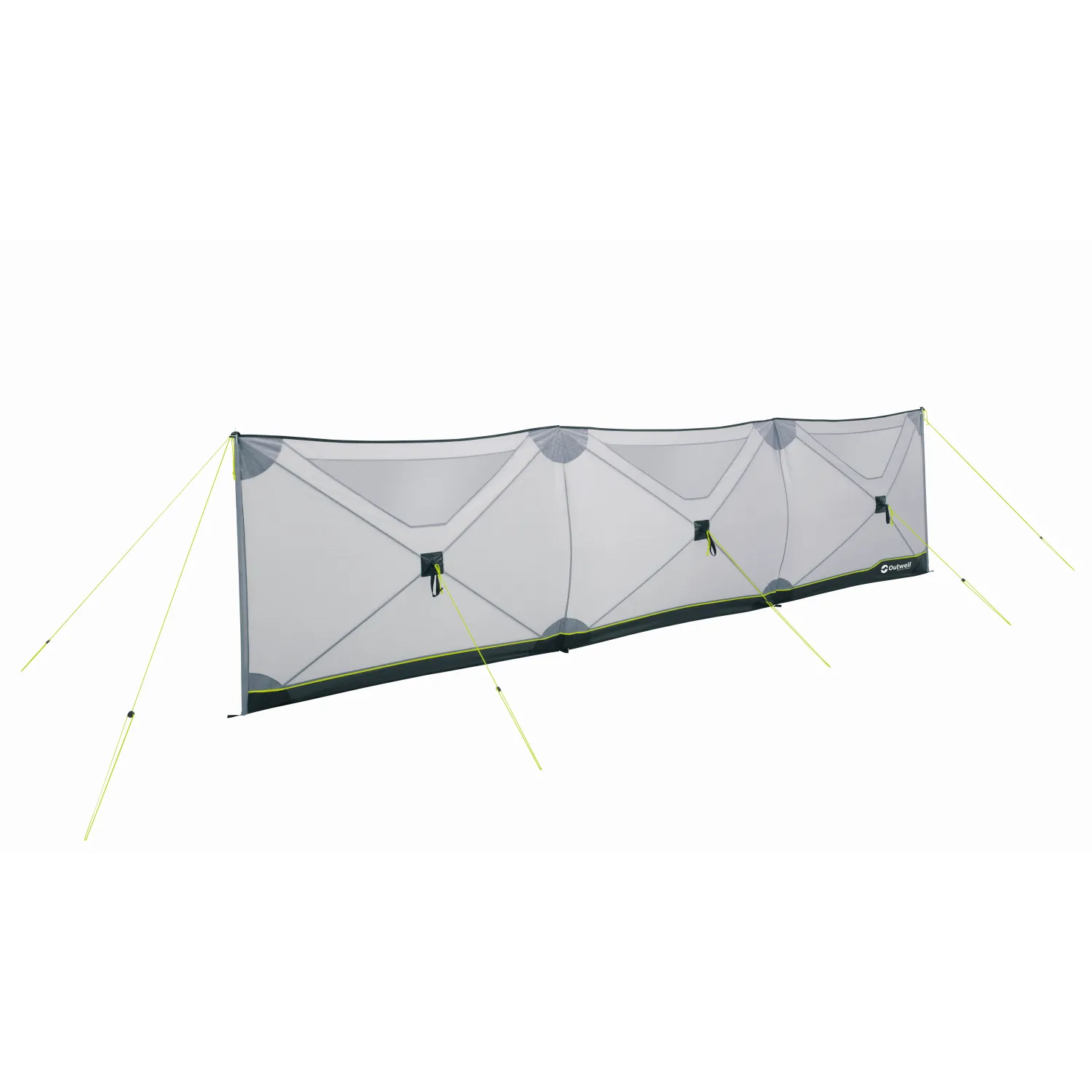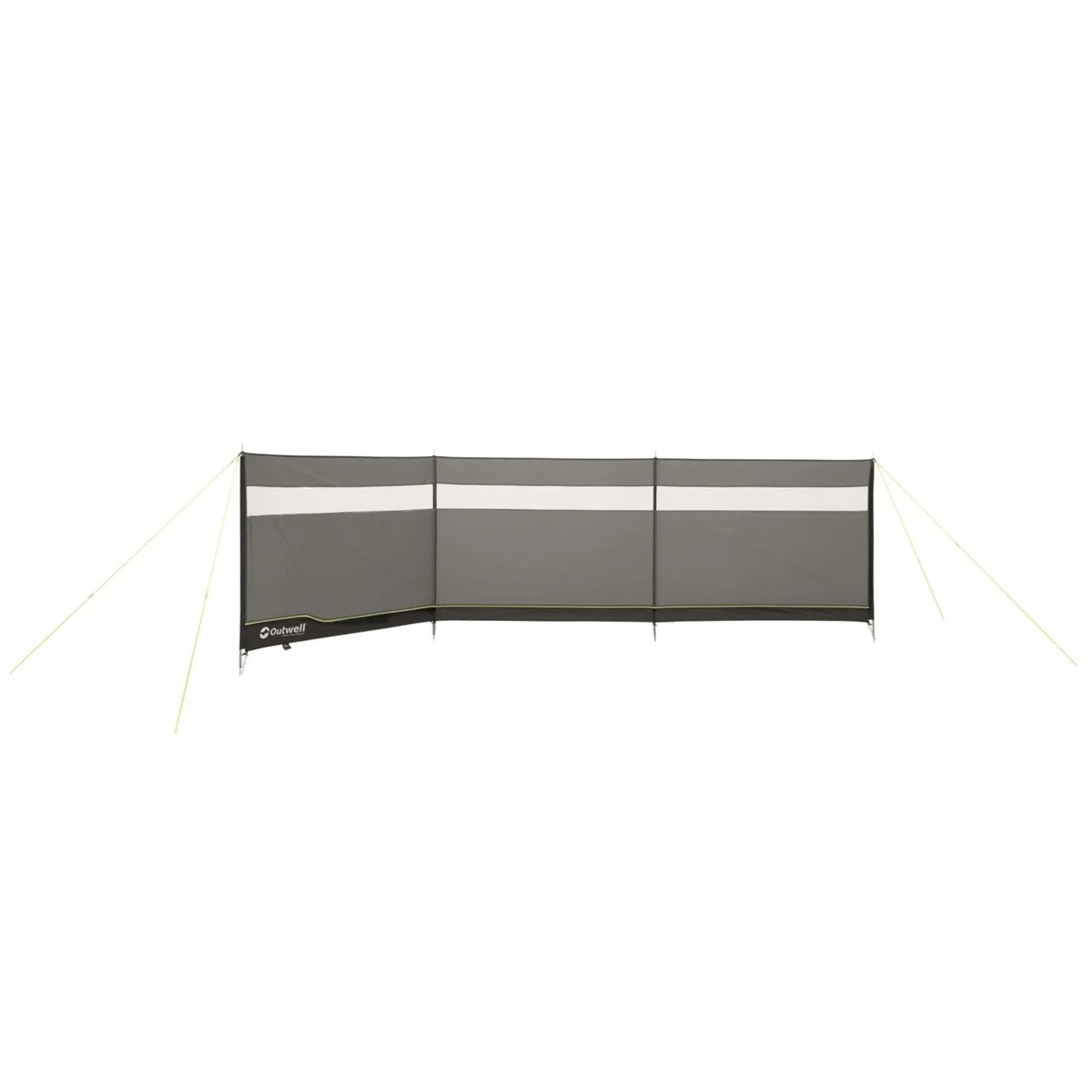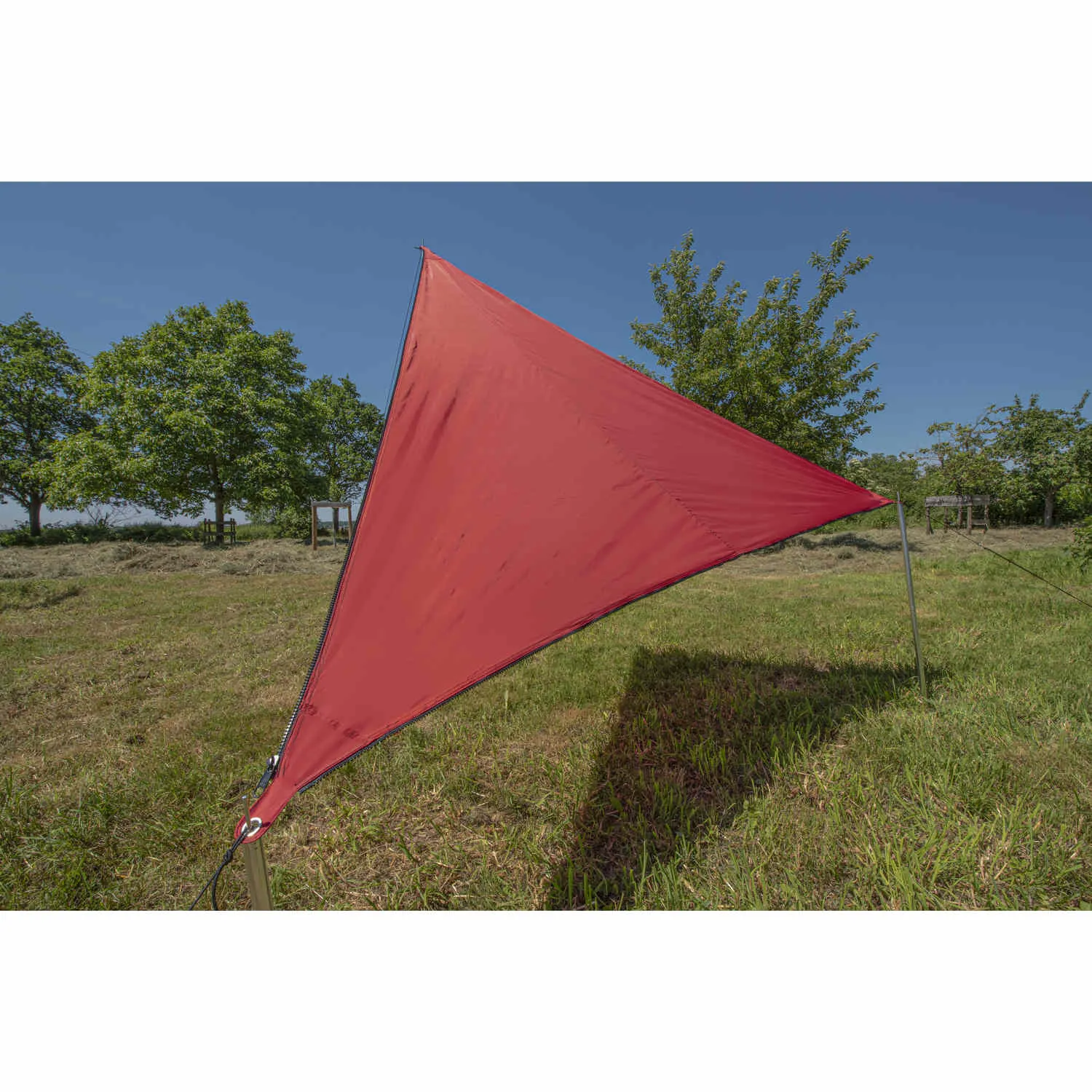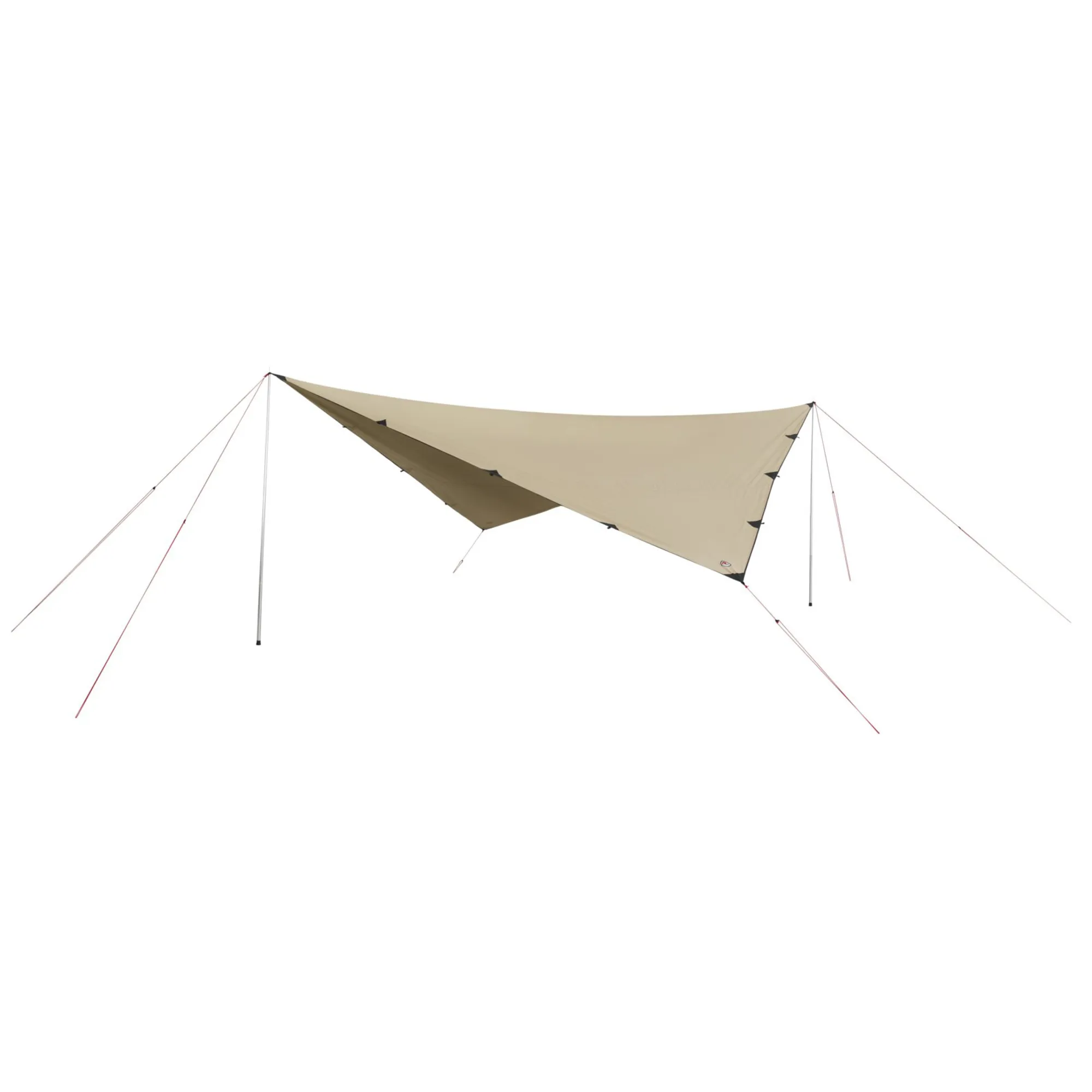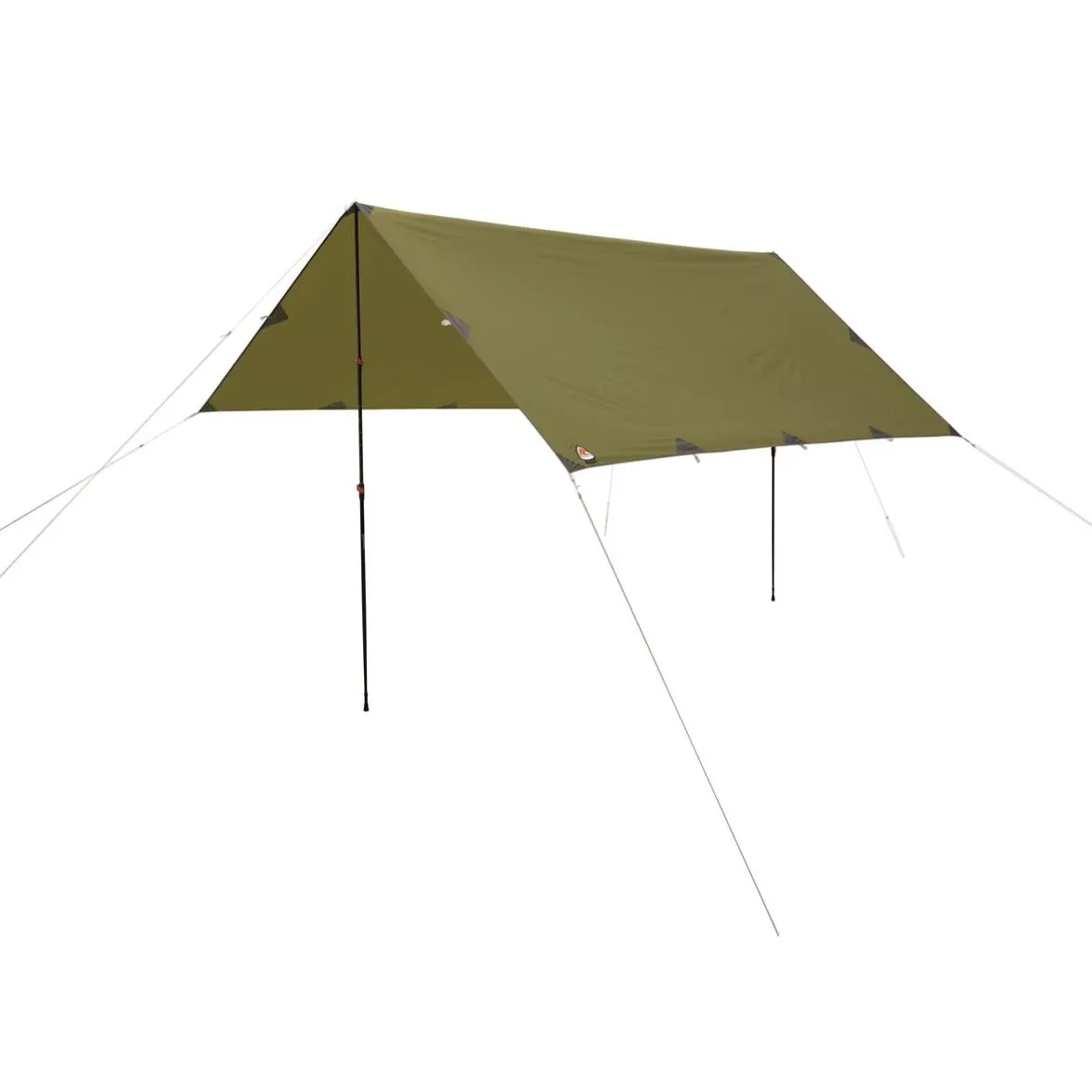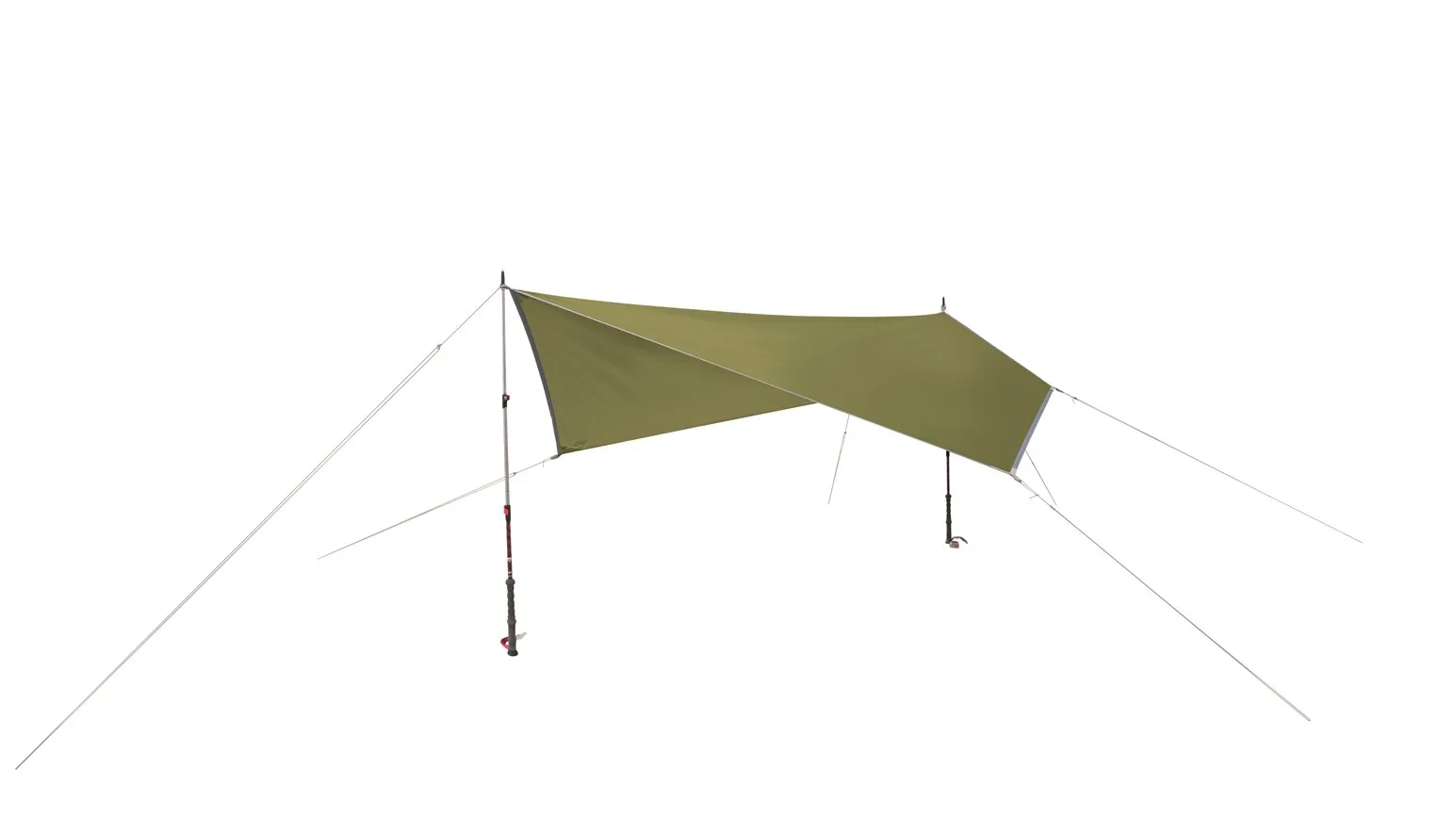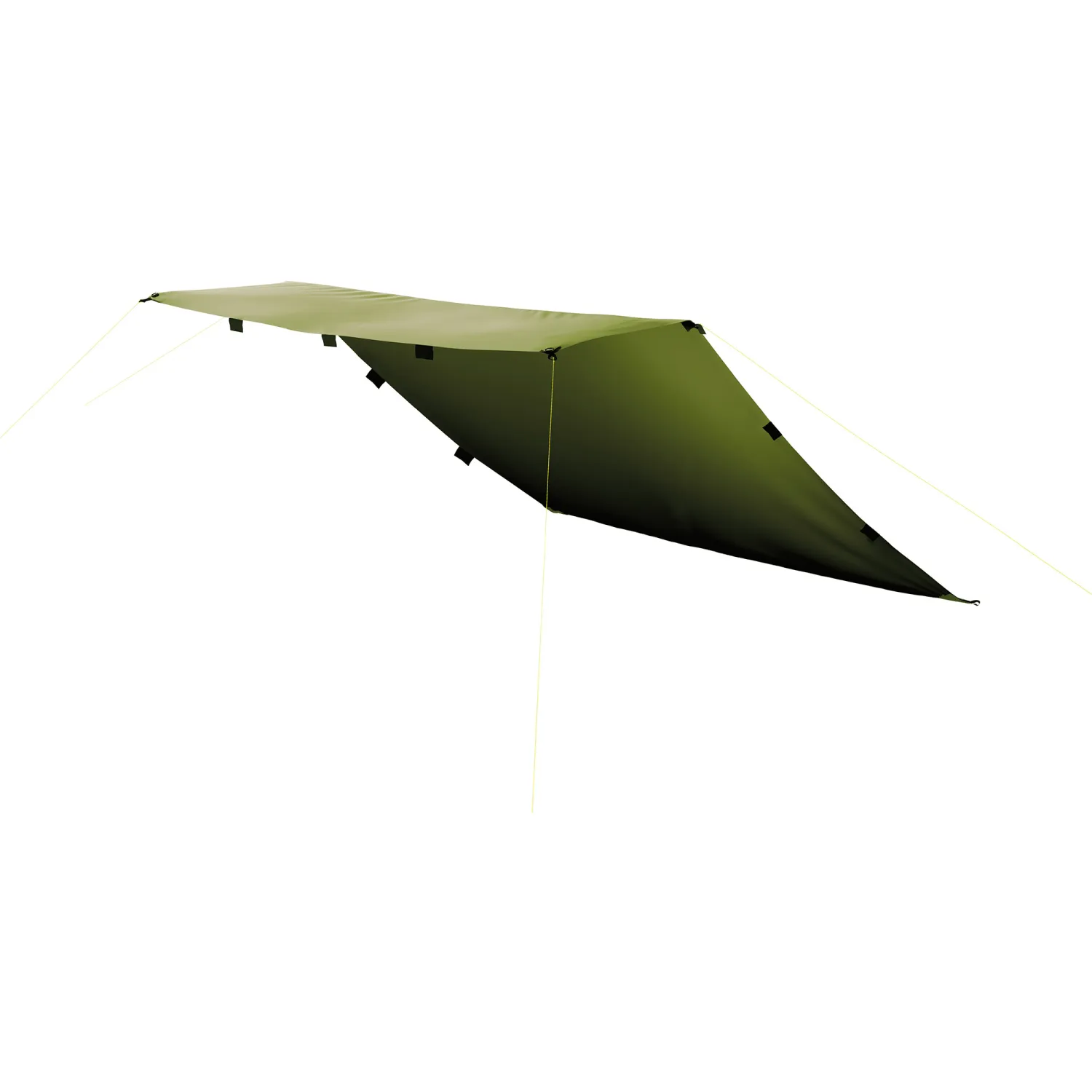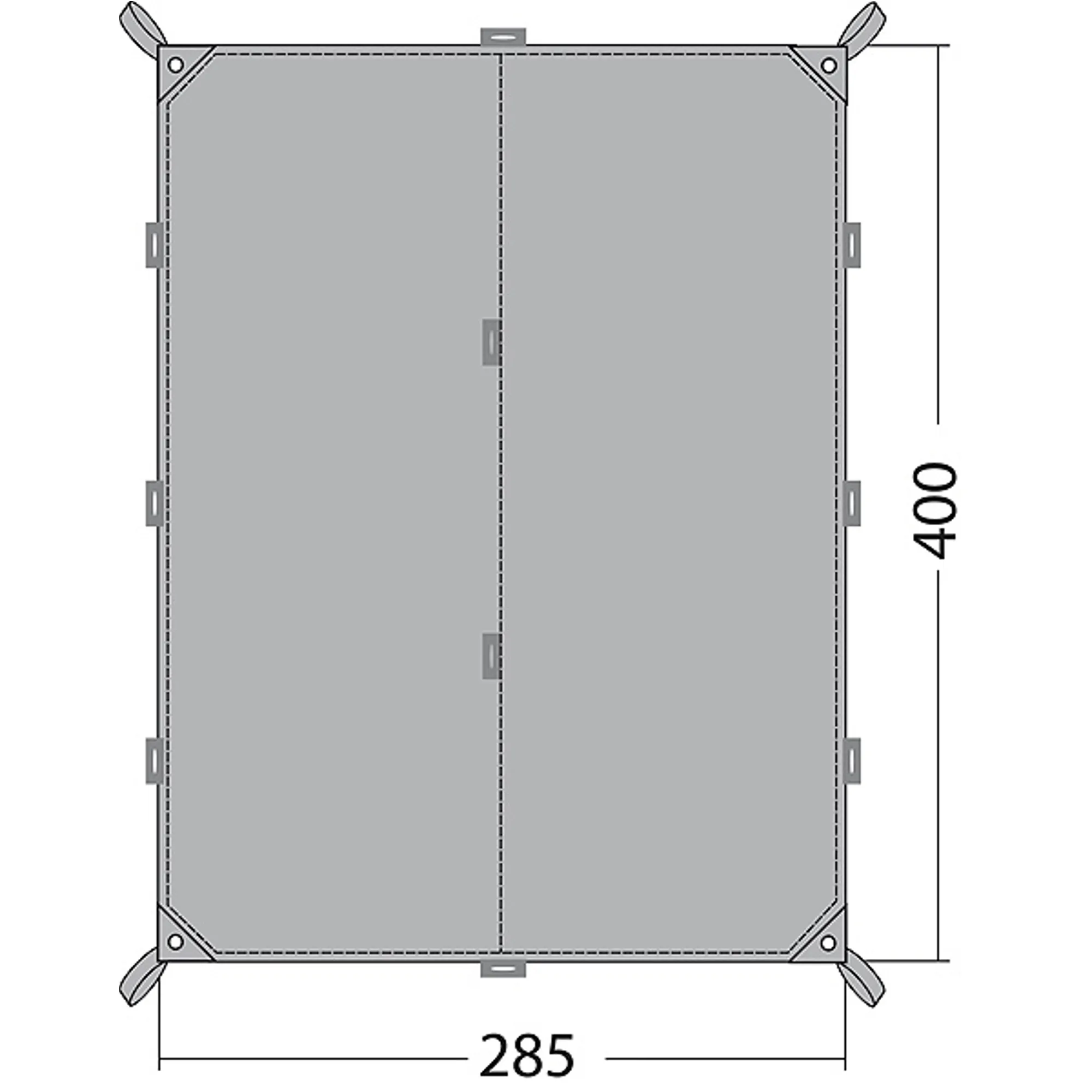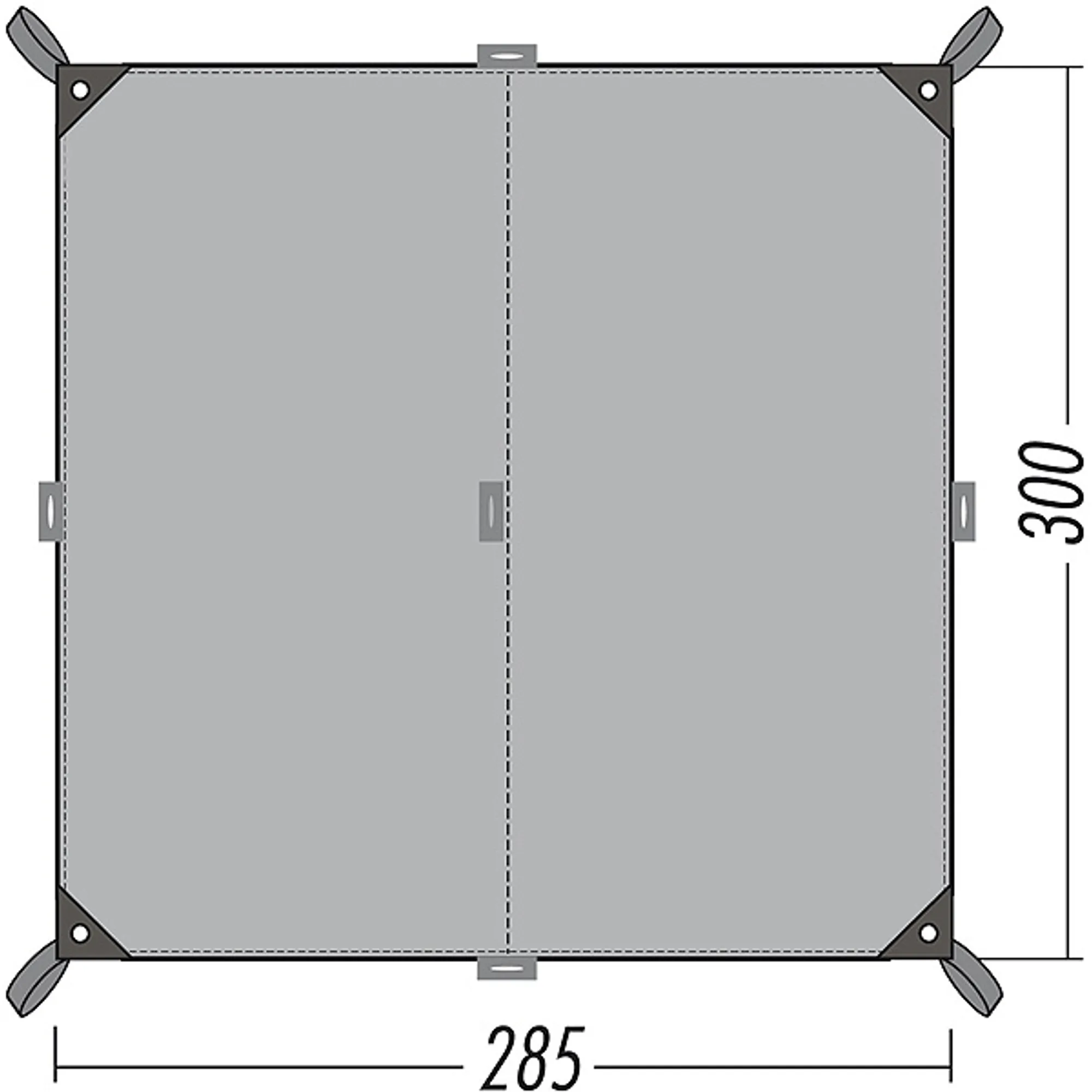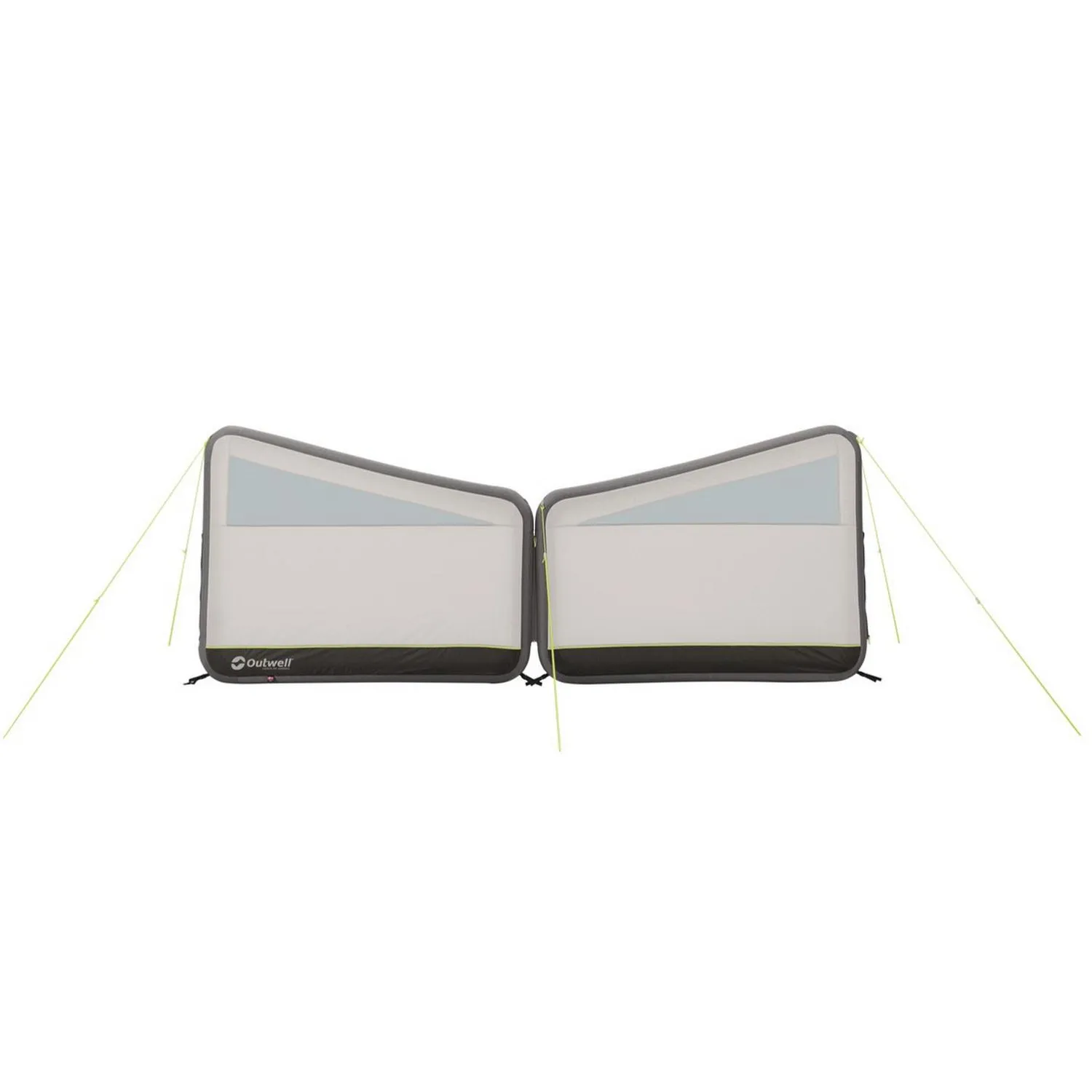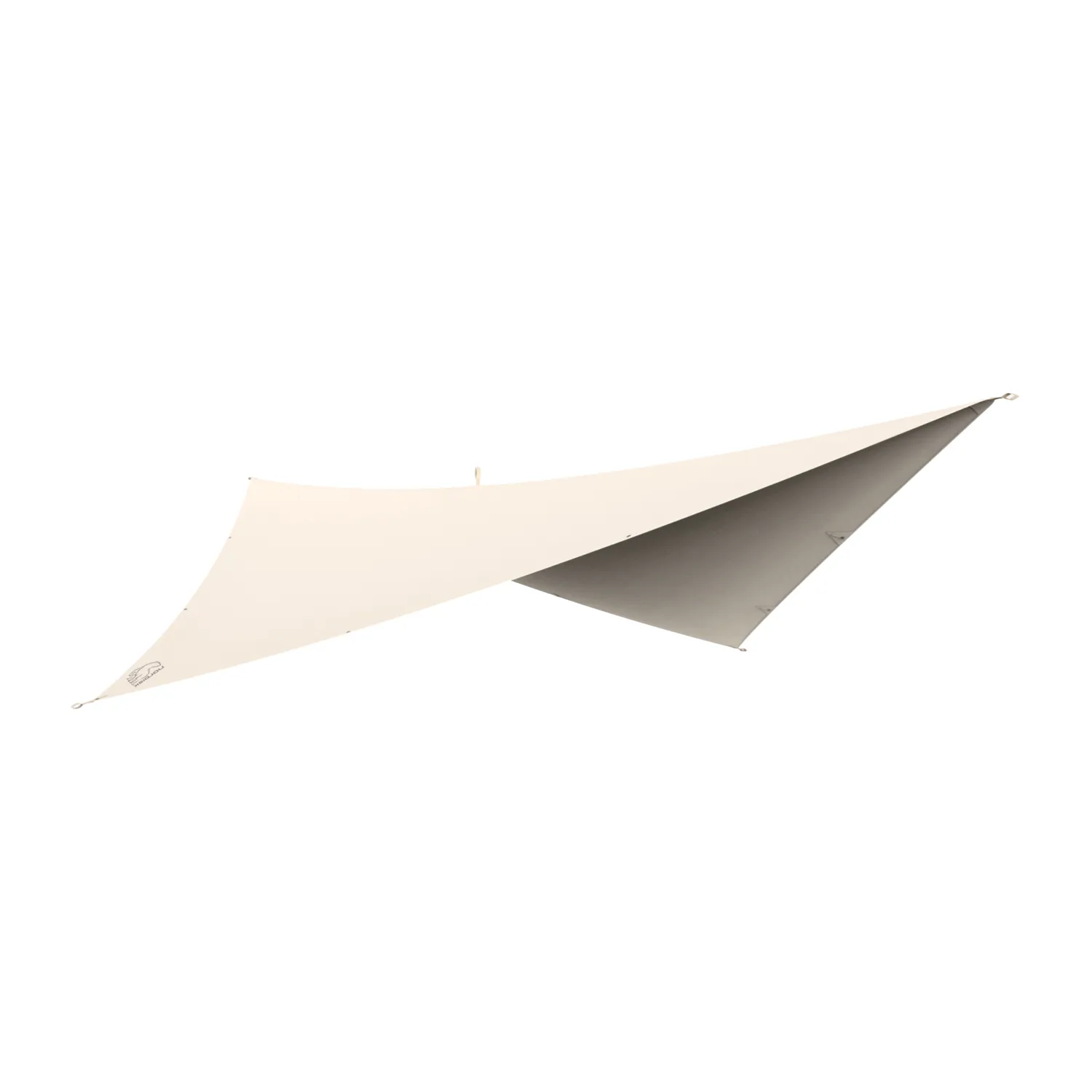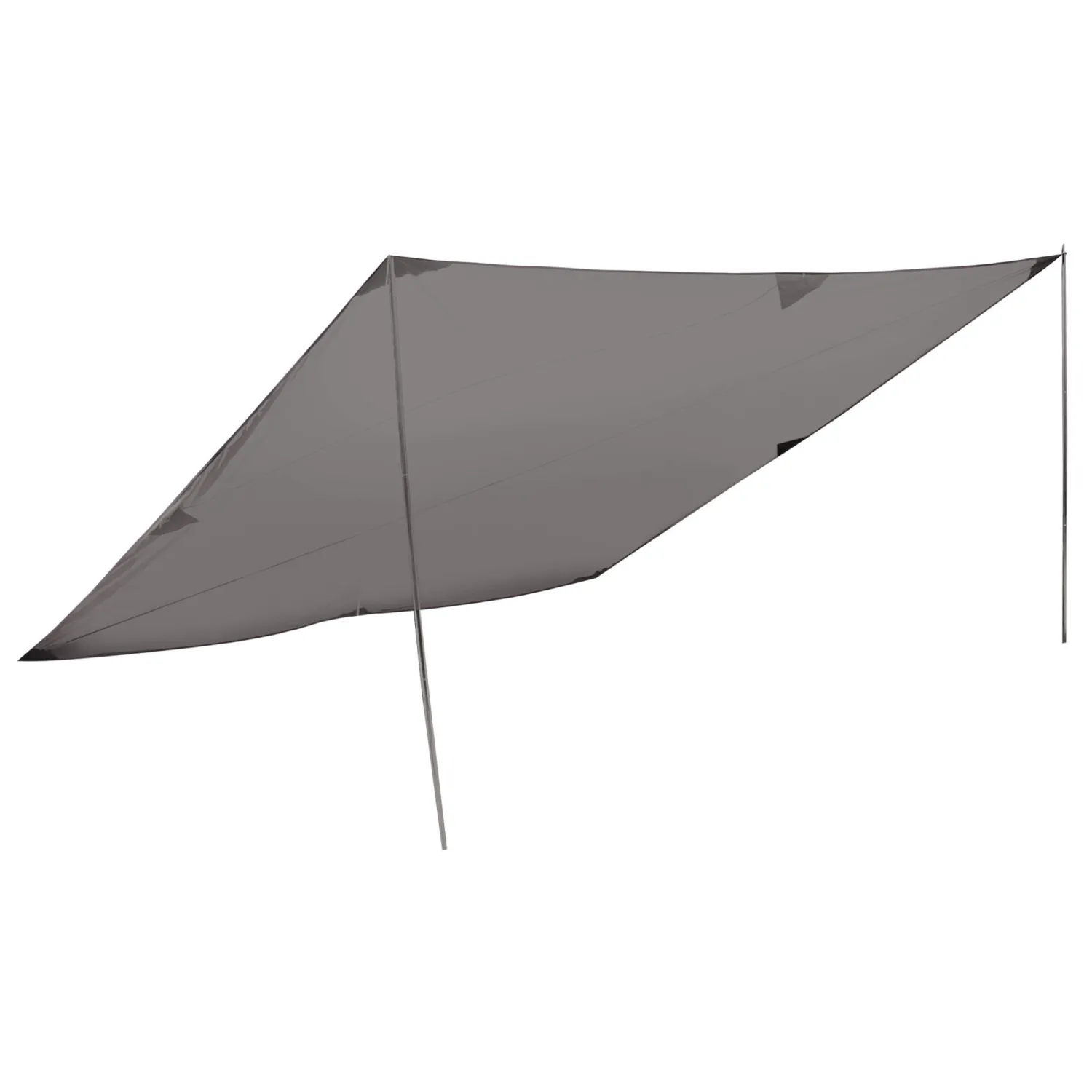Tarps / wind protection
Versatile tarpaulin for camping, sun protection & more
Do you love camping and sleeping outdoors, but often find the hassle of carrying a heavy tent too strenuous? Whether you need a rain cover, sun protection or an improvised, ultra-light tent for camping close to nature - a tarp can be used in a variety of ways.
Who are tarps suitable for?
Simply put, tarps are universally usable and flexibly tensionable protective tarpaulins. They can be rectangular, triangular or square in shape. They can be used for a wide variety of purposes - as a tent, awning or rain cover. Are you happier the closer you can be to nature? Then the tarp is the ultralight, inexpensive tent alternative for you. But even if you're just looking for sun protection for your tent or a rain cover for your outdoor cooking area, a tarp is the right choice. An interesting addition to the conventional tarp: you can use the tarp poncho as a poncho to protect you from the rain - and when you arrive at your destination, you can build a tarp to replace your tent and much more.
Possible areas of use for the tarp
the "uninitiated" might assume that the tarp is simply a coated tarpaulin that is only used as an awning. But the tarp can do so much more:
- Alternative to a tent: Close-to-nature shelter without having to lug around a heavy tent
- Sun protection: Awning for shade on tents, caravans, motorhomes and terraces
- Beach shell
- Rain and wind protection: Protects against rain and wind, roof under which you can sit when it rains
- Underlay: Underlay for picnic blanket on wet and dirty ground
- Emergency shelter or meeting point for tent or scout camps
- Combined with a tent: Canopy / protection for the tent entrance
- Large roof for the outdoor kitchen
- Roof for the hammock
- Tarpaulin: Additional protection under the tent against rainwater
Size and weight of the tent alternative
Compared to conventional tents, the tarp is characterised by its ultra-light weight and small pack size. This means it fits in any rucksack and is not a cumbersome obstacle when cycling. Our tarps weigh between 320 g and 9.9 kg (including 2 steel poles). The largest pack size is 78 x 15 cm. The usable area is generously dimensioned at max. 575 x 740 cm. Our tarp ponchos already weigh 300 g and have a pack size of 18 x 10 cm. How big your tarp should be depends on how many people you want to use it with and for what purpose (tent, rain cover, sun protection). And of course, the larger the usable area, the heavier the tarp.
Tarp material: polyester, cotton or cotton blend?
Tarps are usually made of either synthetic fibres, cotton or a mixture of both materials. The tarpaulins are usually coated to withstand environmental influences.
Polyester has little to no elasticity - if the tarp gets wet, this is an advantage that should not be underestimated. Thanks to the close-meshed fabric, the synthetic fibre also offers good UV protection. The material is comparatively light and requires little effort to set up. The easy-care polyester can simply be cleaned with a damp cloth and soapy water.
In contrast to synthetic fibres, pure cotton is breathable and provides pleasant air - especially at high temperatures. Unfortunately, the material is also heavier and generally more expensive. Cotton also warps when exposed to moisture and can become mouldy.
Coated cotton blend fabric offers the best of both worlds. Thanks to the cotton content, sufficient air circulates to create a pleasant climate. The weight is low and the tarp is weatherproof. Another plus point: the blended fabric protects better against UV radiation than pure cotton.
The following table compares the different tarp materials:
| Polyester | Cotton | Cotton blended fabric | |
|---|---|---|---|
| Weight | Lightest | Heavy | Light |
| Room climate | Stuffy | Pleasant | Pleasant |
| Easy to clean | ✓ | ✕ | ✓ |
| UV protection | ✓ (if close-meshed) | Little | ✓ (with high polyester content) |
| Breathable | ✕ | ✓ | ✓ |
| Can become mouldy | ✕ | ✓ | ✕ |
| Dries quickly | ✓ | ✕ | ✓ |
Tarp or tent? A comparison
Do you doubt whether a tarp can actually be an alternative to your much-loved tent? We have compared tents and tarps and revealed the advantages of each variant:
There's no denying it: A tent already offers a lot of protection and privacy in terms of feeling. You can keep to yourself - after all, the structure is an enclosed space. Insects are simply kept out - mosquitoes don't stand a chance thanks to the mosquito net. Thanks to the stable construction and protective material all around, you are also protected from strong winds and rain - if the tent is pitched correctly.
You can become one with nature in the tarp. You are protected under the tarp roof and can enjoy an unobstructed view of the great outdoors and sleep under a starry sky. The inexpensive tent replacement weighs very little, doesn't take up much space and is particularly suitable for campers who enjoy travelling on foot or by bike. They can be set up quickly and are also suitable for frequent changes of location. The tarp is obviously well ventilated and also protects you from light wind and rain.
Conclusion: If you are planning to camp in a predominantly dry and warm region, the tarp is a real alternative for you. A simple mosquito net over the tarp can help against mosquitoes. The low weight of the tarp is a blessing, especially if you often change locations and are travelling on foot or by bike.
Setting up or attaching tarps
Tarps are true quick-change artists - not only can you use them for a wide variety of purposes, you can also set them up as a wide variety of structures:
- Long tent
- Slanted tent
- Rain canopy or awning
- Beach shell
- ...
Tools for setting up
You will need tools to set up your tarp. Depending on your carving skills and desire for stability, you can replace some of these with natural materials:
- Rope: paracord or cordage
- Pegs or cut branches
- Stand-up poles, trekking poles or wooden sticks
The tarp is tensioned with and over the rope. The poles increase the height and stability of the tarp - the poles are particularly useful if you need to set up the tarp without the co-operation of trees. Use the pegs to secure the tent.
Setting up a tarp as a long tent with trees
- For the tarp variant with trees, first attach the rope to a tree.
- Pay attention to the wind direction - after all, you don't want the wind to whistle through your tarp.
- Now thread the rope through all the eyelets or loops in the centre of the tarp.
- Attach the other end of the rope to the second tree.
- Check that the rope is taut enough.
- Now fasten the two outer eyelets with knots (e.g. Prusik knots) so that they can be tightened by moving them.
- Now tension the long sides on the right and left and fasten them in several places with pegs.
Tensioning a tarp without trees
- For a long tent without trees, spread out the tarp over a large area.
- Now use pegs to secure the eyelets to the left and right of the centre eyelet on one side of the tarp and one eyelet on each of the adjacent sides, which is positioned at an angle to the eyelets just mentioned.
- Again, pay attention to the wind direction.
- For the entrance, now pin the eyelets of the corners of the opposite side of the tarp to the position of the adjacent eyelets.
- Now take the pitching poles and place them in the centre of the tent so that there are two elevations.
- Tie the sides hanging down at the entrance to the back with rope and pegs.
Attach the tarp to the car, motorhome etc
You don't want to set up the tarp separately, but simply attach it to your car or motorhome? The tarp is usually attached to the car, motorhome or caravan with a piping rail. The length of the rail should be as long as the length of the tarp. Of course, the tarp can also be easily attached using a rope or carabiner.

























